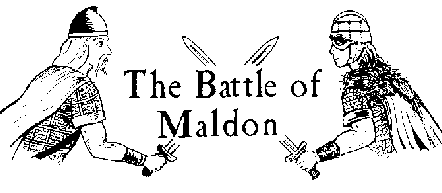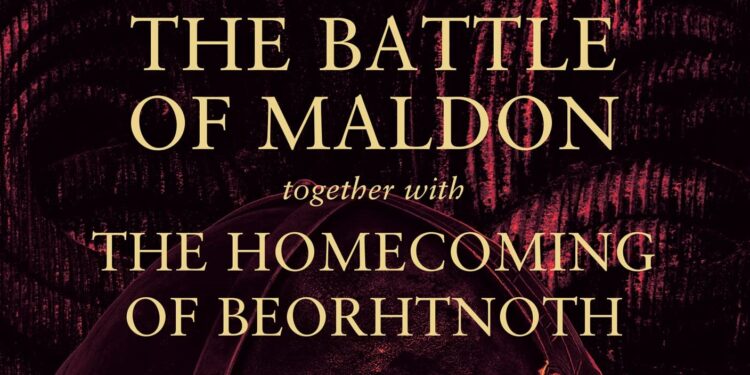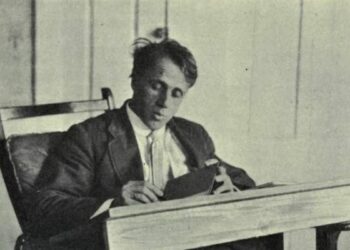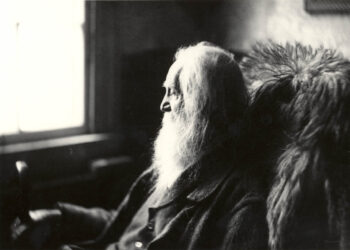Table of Contents
ToggleIntroduction
The Battle Of Maldon Poem Summary By Anonymous One of the most important pieces of Old English literature is The Battle of Maldon, which describes a historic conflict between the Anglo-Saxons and Viking invaders with great detail and drama. Though its exact date and authorship are still unknown, the poem is believed to have been written in the 10th century, possibly in the late 900s. The poem depicts the physical struggle as well as the ethical, cultural, and spiritual aspects of war. The actual fight took place in 991, close to the town of Maldon in Essex, England.
The Battle of Maldon is a heroic tale that exemplifies themes of honor, devotion, and the nuanced interplay between personal survival and duty. The poem examines the duties of leaders, the nature of courage, and the significance of reputation in the Anglo-Saxon warrior culture through striking imagery and an emphasis on important people, particularly the warrior Byrhtnoth.
Summary of The Battle of Maldon
The Battle of Maldon is a fragmentary epic poem that survives in only a portion of its original form, with the central narrative beginning at the start of the battle and continuing through a series of heroic deaths and moments of personal and collective valor. The poem opens with the Viking invaders, led by a chieftain named Olaf, arriving on the shores of Essex. They demand tribute from the Anglo-Saxon kingdom, and their aggression leads to a confrontation with the Anglo-Saxon forces, commanded by the ealdorman (noble warrior leader) Byrhtnoth.
In the poem, Byrhtnoth is depicted as a strong and noble leader, committed to defending his people and his land. He is portrayed as a figure who values honor above all else and is willing to risk everything in order to uphold the dignity and reputation of his kingdom. Despite the overwhelming odds and the Vikings’ superior numbers, Byrhtnoth and his warriors prepare for battle, fully aware that victory will not come easily.
Read more
The key turning point in the poem occurs when Byrhtnoth, in a moment of brash courage, allows the Viking forces to cross a causeway that separates the two armies. This act of generosity, meant to avoid unnecessary bloodshed and to offer the enemy a fair fight, ultimately proves disastrous. The Vikings, seeing Byrhtnoth’s willingness to negotiate, exploit the situation and launch a devastating attack, which puts the Anglo-Saxon forces at a severe disadvantage.
As the battle rages on, Byrhtnoth continues to lead his warriors with bravery, but the outcome becomes inevitable. The warriors under his command are inspired by his example, but they are also faced with the harsh realities of warfare. Many of Byrhtnoth’s men fall in battle, and eventually, Byrhtnoth himself is killed by the Vikings. However, his death does not signify total defeat, as the poem emphasizes the nobility and dignity of his actions. The poem ends with a reflection on the nature of loyalty and heroism, as the survivors vow to carry on the fight for their land and their people, even in the face of overwhelming adversity.
Key Characters
- Byrhtnoth: The central figure in the poem, Byrhtnoth is portrayed as a heroic and honorable warrior-leader. His decision to allow the Vikings to cross the causeway, though it ultimately leads to his death, is seen as a tragic act of nobility and generosity. Byrhtnoth’s death serves as a poignant reminder of the costs of valor and the moral choices leaders must make in times of war.
- The Vikings: Led by Olaf, the Vikings are portrayed as ruthless and cunning, taking advantage of Byrhtnoth’s decision to allow them safe passage. They are the antagonists of the poem, representing the chaotic and violent forces that threaten the peace and stability of Anglo-Saxon England.
- The Anglo-Saxon Warriors: The warriors who fight alongside Byrhtnoth are depicted as loyal and brave, committed to their leader and to the defense of their land. However, some of them falter in the face of overwhelming odds, particularly after Byrhtnoth’s death, which reflects the complex nature of loyalty and duty in wartime.

Themes in The Battle of Maldon
1. Heroism and Sacrifice
At the heart of The Battle of Maldon is the theme of heroism, particularly the heroism of Byrhtnoth. The poem idealizes the Anglo-Saxon warrior ethos, which emphasized courage, honor, and the willingness to fight for one’s people and one’s land. Byrhtnoth’s actions throughout the poem—his noble decision to allow the Vikings to cross the causeway, his leadership in battle, and his final sacrifice—exemplify the virtues of the ideal warrior.
The Battle Of Maldon Poem Summary By Anonymous The poem suggests that heroism is not merely about physical strength or military prowess but also about making difficult moral decisions, even when those decisions lead to personal sacrifice. Byrhtnoth’s willingness to face death for the sake of his people and his values elevates him as a tragic hero, whose death is both noble and tragic.
This theme of sacrifice is further underscored by the deaths of Byrhtnoth’s warriors. While some of them hesitate or flee in the face of the enemy’s strength, others, inspired by Byrhtnoth’s example, continue to fight to the end, sacrificing their lives for their leader and their land. The theme of sacrifice resonates with the idea of the warrior’s duty to their people, and the poem presents an ideal of selfless devotion to a cause greater than oneself.
2. Loyalty and Betrayal
The Battle Of Maldon Poem Summary By Anonymous Another central theme in The Battle of Maldon is the tension between loyalty and betrayal. Loyalty is one of the highest virtues in Anglo-Saxon culture, and Byrhtnoth’s warriors are portrayed as fiercely loyal to him. However, the poem complicates this ideal by showing the moments when loyalty falters. The warriors who abandon the battle after Byrhtnoth’s death are depicted as betraying their leader, and their actions are presented as dishonorable.
The Battle Of Maldon Poem Summary By Anonymous The concept of betrayal is also reflected in Byrhtnoth’s decision to allow the Vikings to cross the causeway. While his intention is to avoid unnecessary bloodshed and to fight with honor, the Vikings, who are portrayed as treacherous and cunning, take advantage of his generosity. This act of strategic compromise ultimately leads to Byrhtnoth’s downfall, highlighting the moral dilemma leaders face when deciding how to balance honor and pragmatism.
3. The Heroic Code and the Role of Leadership
The Battle Of Maldon Poem Summary By Anonymous The Battle of Maldon is a vivid portrayal of the heroic code that governed Anglo-Saxon society. The poem shows the importance of reputation, both in life and death, and the emphasis placed on the actions of warriors and their leaders. Byrhtnoth’s leadership is central to the poem’s moral and narrative structure, as his decisions shape the course of the battle and the fate of his warriors.
The Battle Of Maldon Poem Summary By Anonymous The heroic code in the poem stresses that a leader’s worth is determined by his ability to inspire loyalty and courage in his followers. Byrhtnoth’s men are willing to fight and die for him, not because they are obligated to do so, but because they are bound by their loyalty to their leader. This sense of duty, and the belief that a warrior’s actions will determine their eternal reputation, is a key aspect of the Anglo-Saxon warrior ethos.
Read more
4. The Conflict Between Pagan and Christian Values
The Battle Of Maldon Poem Summary By Anonymous While The Battle of Maldon is rooted in a pre-Christian warrior culture, it was written at a time when Christianity was becoming more established in Anglo-Saxon England. The poem reflects this transitional period, showing the tension between the older pagan warrior values and the emerging Christian values of mercy, humility, and peace.
The warriors in the poem are often depicted as adhering to the pagan virtues of courage and honor, while Byrhtnoth’s heroic death can be seen as a kind of Christian martyrdom. The conflict between these two value systems is subtle but present in the poem, as it explores the balance between personal honor and divine will. In some readings, Byrhtnoth’s willingness to sacrifice himself for his people can be interpreted as a reflection of Christian ideals of selflessness and martyrdom.
5. Fate and the Inevitability of Death
The Battle Of Maldon Poem Summary By Anonymous Throughout the poem, there is a strong sense of fate and the inevitability of death. The warriors are aware that death is a constant companion in battle, and the poem frequently acknowledges the role of fate in shaping the lives and deaths of the characters. Byrhtnoth’s death is presented as both inevitable and tragic, and the warriors’ acceptance of death reflects the Anglo-Saxon worldview, which saw death as an unavoidable part of life and warfare.
The Battle Of Maldon Poem Summary By Anonymous While Byrhtnoth’s death is noble, it is also presented as a reminder of the futility of war and the fragility of life. The poem’s tragic ending serves as a meditation on the transient nature of human life and the inescapable role of fate in determining the outcome of battle.

Conclusion
The Battle Of Maldon Poem Summary By Anonymous The bravery, loyalty, and difficult moral choices that defined Anglo-Saxon battle are powerfully and tragically shown in the Battle of Maldon. The poem examines issues of loyalty, sacrifice, fate, and the connection between duty and leadership through its rich characterizations and striking imagery.
The Battle Of Maldon Poem Summary By Anonymous The poem’s representation of the ideals and difficulties faced by the warriors of early medieval England is what will endure, even though its fragmentary character leaves certain problems unanswered. The poem, which provides insightful information about the morals and culture of a bygone era, is still a vital component of the Old English literary tradition.
Read more
(FAQ)
1. What is the historical context of The Battle of Maldon?
The Battle of Maldon is based on a historical event that took place in 991, when Viking forces, led by Olaf Tryggvason, attacked the Anglo-Saxon kingdom of Essex. The poem depicts the battle and the subsequent death of Byrhtnoth, the ealdorman of Essex. The historical context of the battle reflects the ongoing Viking invasions of England during the late 10th century, which had a profound impact on the social, political, and cultural landscape of Anglo-Saxon England.
2. Why is Byrhtnoth’s decision to allow the Vikings to cross the causeway significant?
Byrhtnoth’s decision to allow the Vikings to cross the causeway is a key turning point in the poem. It highlights his sense of honor and generosity, as he wishes to avoid unnecessary bloodshed. However, this act of magnanimity is also a tragic mistake, as it gives the Vikings the opportunity to launch a devastating attack. The decision underscores the complex relationship between honor, strategy, and the harsh realities of warfare.
3. What is the role of fate in The Battle of Maldon?
Fate plays a central role in The Battle of Maldon, as the poem reflects the inevitability of death and the uncontrollable forces that shape the course of events. The warriors accept that death is a natural part of their existence, and Byrhtnoth’s death is seen as both a tragic and inevitable outcome of his heroic actions.
4. How does The Battle of Maldon reflect Anglo-Saxon values?
The Battle of Maldon reflects the central values of Anglo-Saxon society, including loyalty, honor, courage, and the importance of reputation. The poem portrays these values through the actions and decisions of Byrhtnoth and his warriors, emphasizing the ideal of the noble warrior who sacrifices everything for his people and his land.
Read more

















